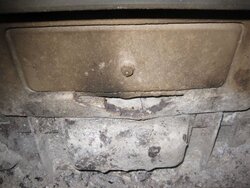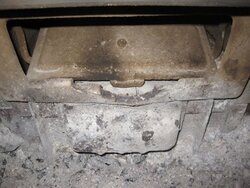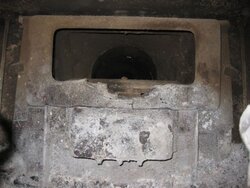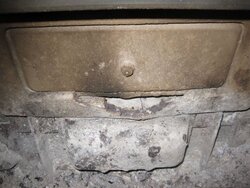I have an Intrepid II Model 1308 and the piece of cast iron surrounding the flue plate seems to have gotten cancer. It suddenly seems to be growing and growing – expanding – and since there's nowhere for it to expand to, it's cracking and falling apart. (See photos.)



Does anyone know:
1. Why it's doing this? and
2. Where to find a replacement piece? Black Swan and others don't seem to have it.
Thanks all, and stay warm!



Does anyone know:
1. Why it's doing this? and
2. Where to find a replacement piece? Black Swan and others don't seem to have it.
Thanks all, and stay warm!






